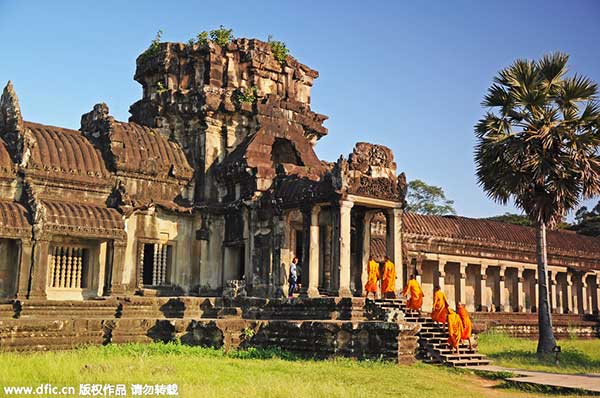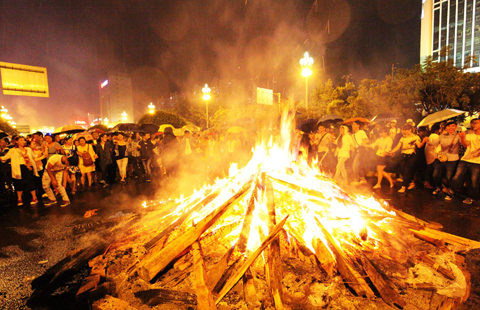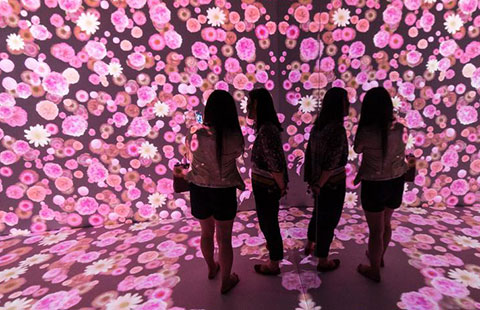China's 'sky eyes' help protect world heritage Angkor Wat
Updated: 2015-08-10 14:41
(Xinhua)
|
||||||||
 |
|
China's eyes in the sky are providing a new level of protection for the ruins of Cambodia's Angkor Wat, the magnificent temple of the Khmer Empire, which faces inundation by tourists and environmental dangers.[Photo/IC] |
Think heritage protection, and the restoration and conservation of historic sites comes to mind. Crowd control and on-site monitoring to limit visitor numbers are also common measures.
Now China's eyes in the sky are providing a new level of protection for the ruins of Cambodia's Angkor Wat, the magnificent temple of the Khmer Empire, which faces inundation by tourists and environmental dangers.
Chinese satellites are using remote sensing to collect and process images of the site in real time.
The technology offers particular advantages in instantly observing and analyzing the effects of natural disasters.
"Basically, we have eyes in the sky and we can see what happens to the ancient temples and their environment immediately," says Hong Tianhua, deputy director and secretary general of the International Centre on Space Technologies for Natural and Cultural Heritage under the Auspices of UNESCO (HIST).
HIST is the first and only institute in the world to use remote sensing technology to preserve cultural heritage sites under UNESCO.
A memorandum of understanding, signed by the Institute of Remote Sensing and Digital Earth (RADI) of China, Chinese Academy of Sciences (CAS), HIST and Cambodia' s Authority for the Protection and Management of Angkor and the Region of Siem Reap (APSARA) in 2014, enables cooperation in the use of Chinese satellite data.
China then started to help APSARA build a ground station to receive and share the data.
It also helped provide training in the technology to managers and researchers of world heritage sites from 12 developing countries in Asia and Africa, including Cambodia, through international workshops.
Trained staff can now compare new data with that collected in the past to identify any abnormal changes, providing a scientific basis for decision-making, says Hong.

 The world in photos: Aug 3-9
The world in photos: Aug 3-9
 'Most beautiful road on water'
'Most beautiful road on water'
 Ethnic groups celebrate the Torch Festival
Ethnic groups celebrate the Torch Festival
 Ten photos you don't wanna miss (Aug 3-9)
Ten photos you don't wanna miss (Aug 3-9)
 30 historic and cultural neighborhoods to visit in China
30 historic and cultural neighborhoods to visit in China
 Beijing Museum of Natural History unveils 'Night at the Museum'
Beijing Museum of Natural History unveils 'Night at the Museum'
 Sun Yang wins third consecutive 800m free gold at worlds
Sun Yang wins third consecutive 800m free gold at worlds
 Aerial escape
Aerial escape
Most Viewed
Editor's Picks

|

|

|

|

|

|
Today's Top News
China, US to exchange officials for Xi's visit
State Council approves plan to overhaul SOEs, claims report
S. Korean president mulls whether to join China's war anniversary
Sun Yang is no-show for 1,500 free final at worlds
China willing to work with US to contribute to world peace, stability
China asks further investigation on MH370
Police fatally shoot ax-wielding man at Nashville movie theater
Study-abroad tours in US booming
US Weekly

|

|







